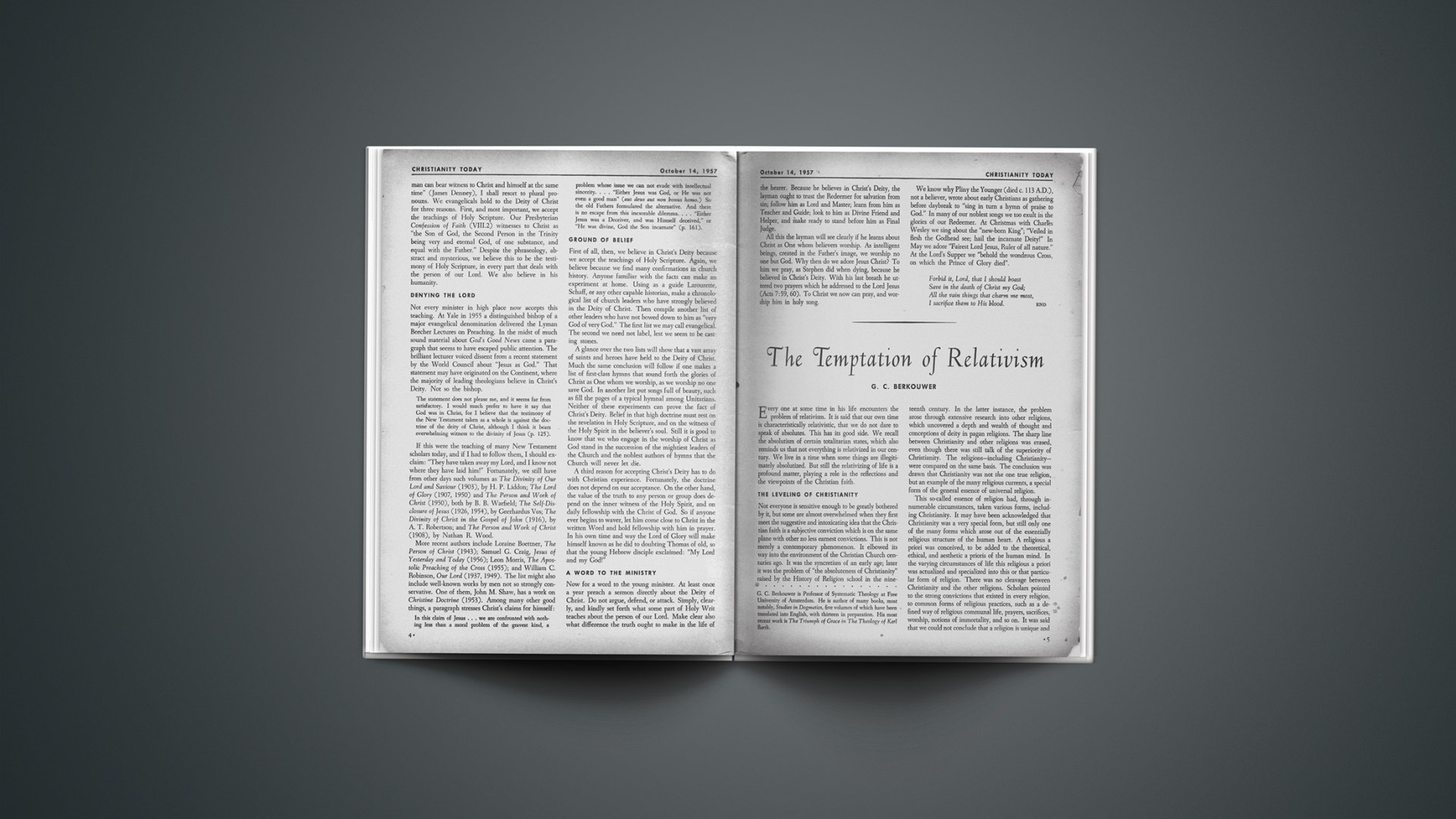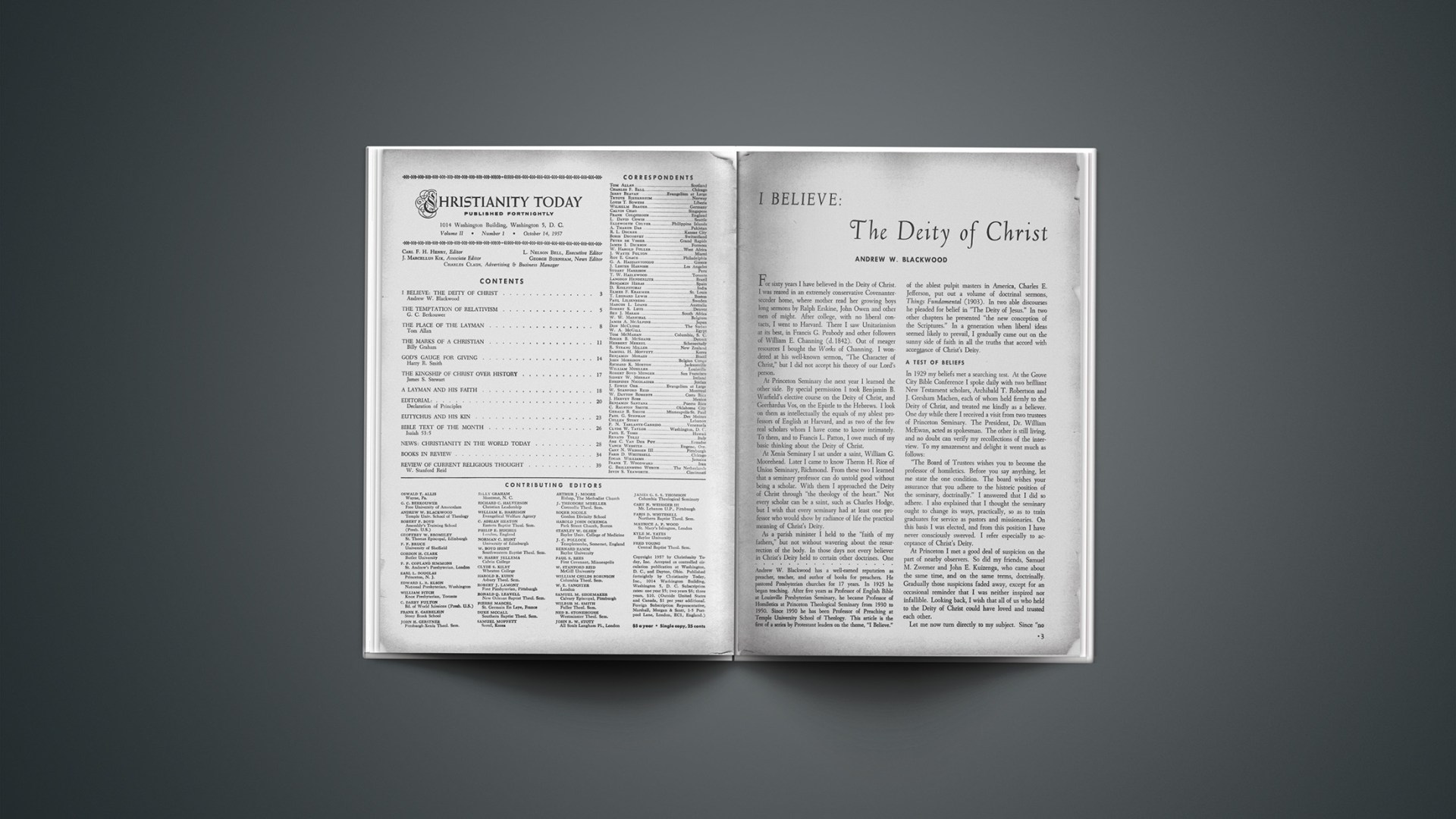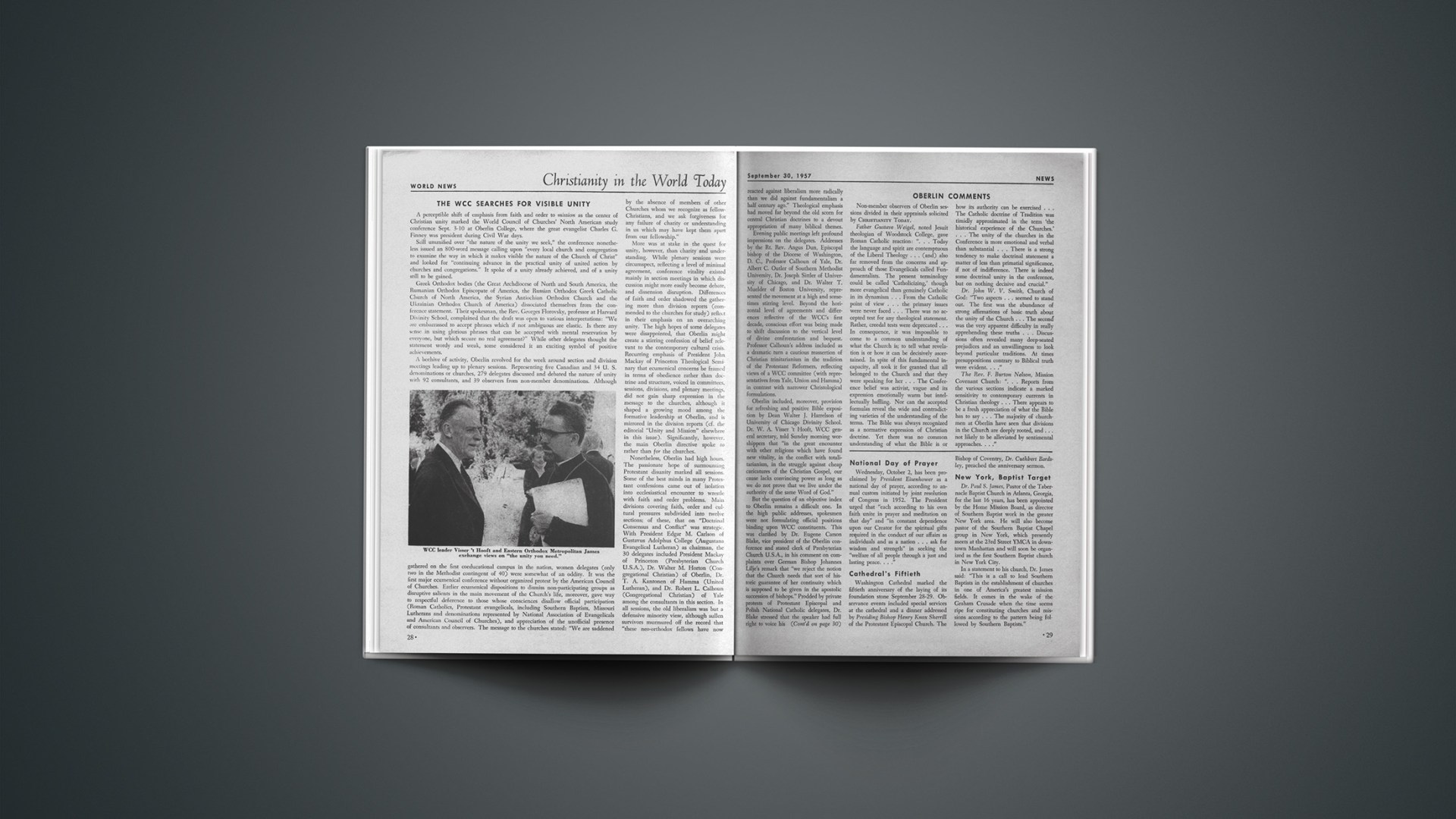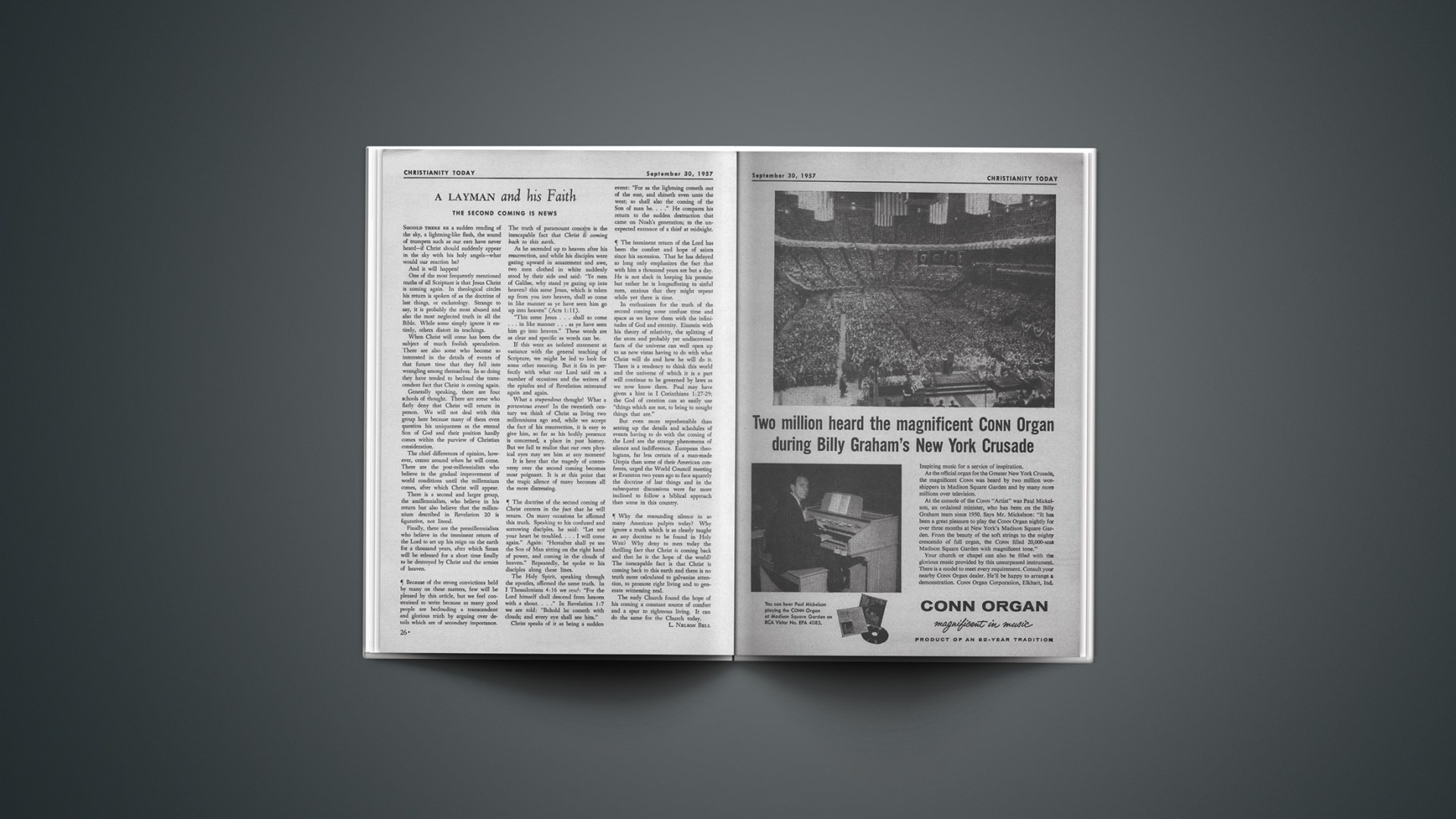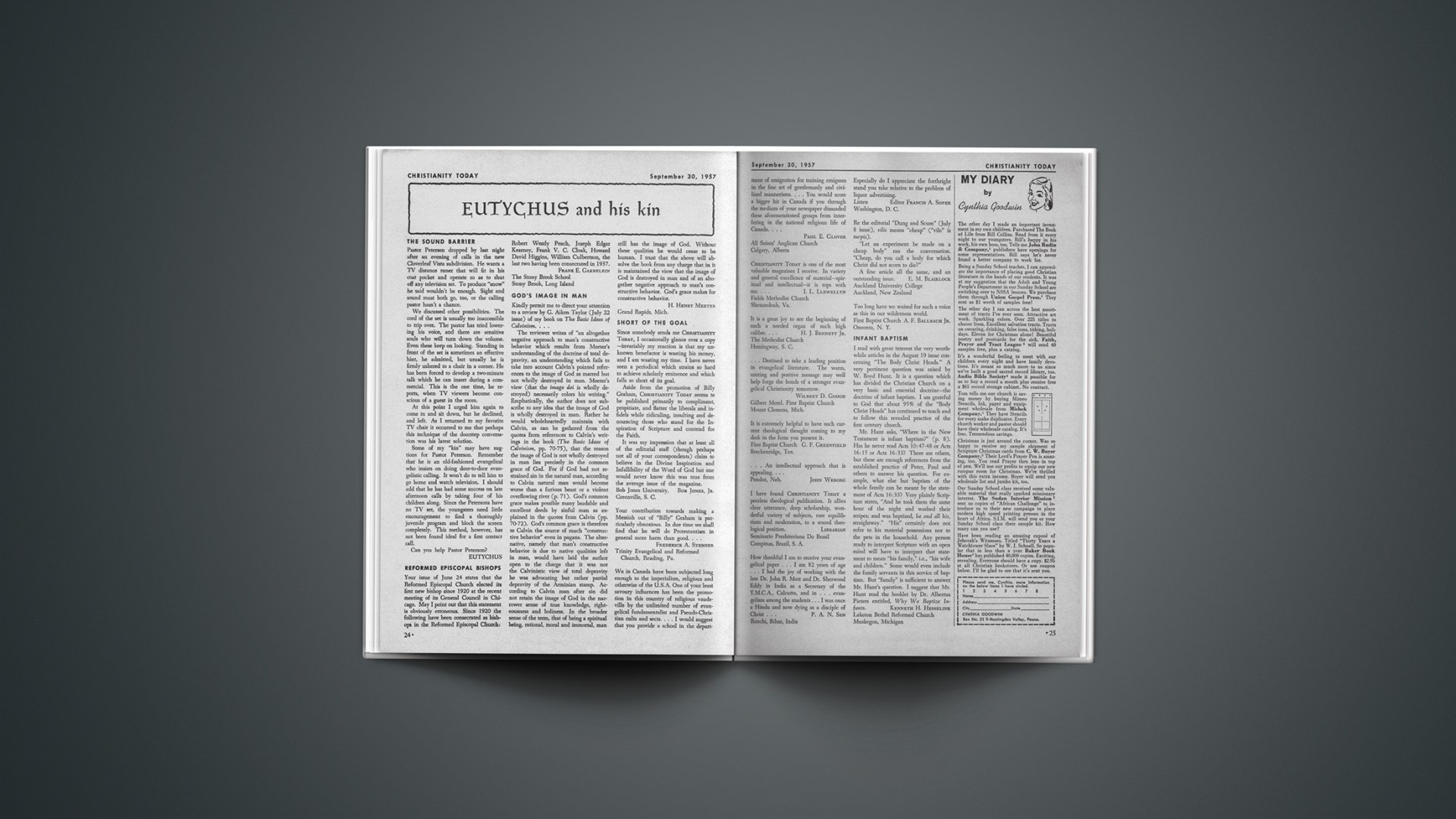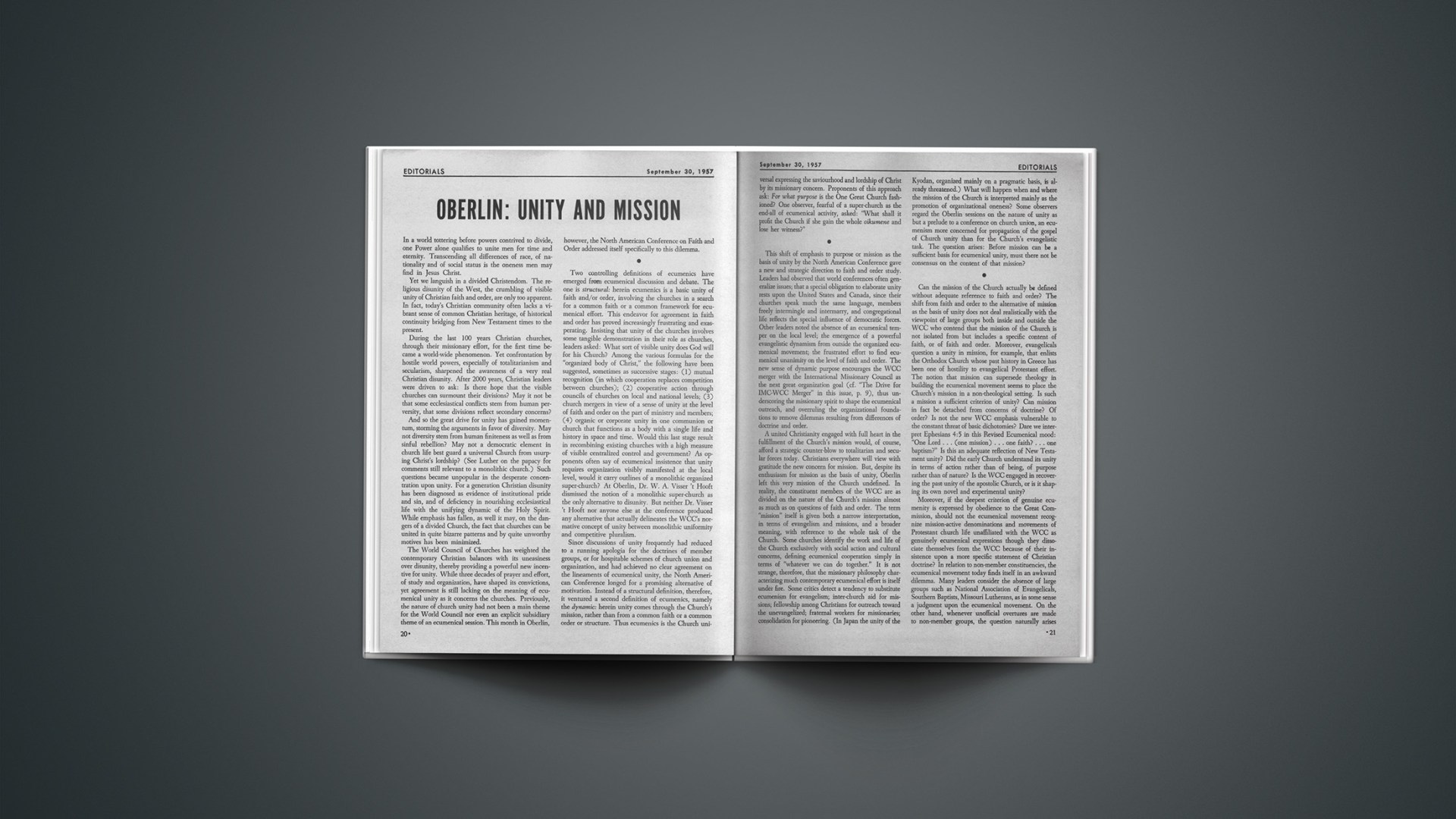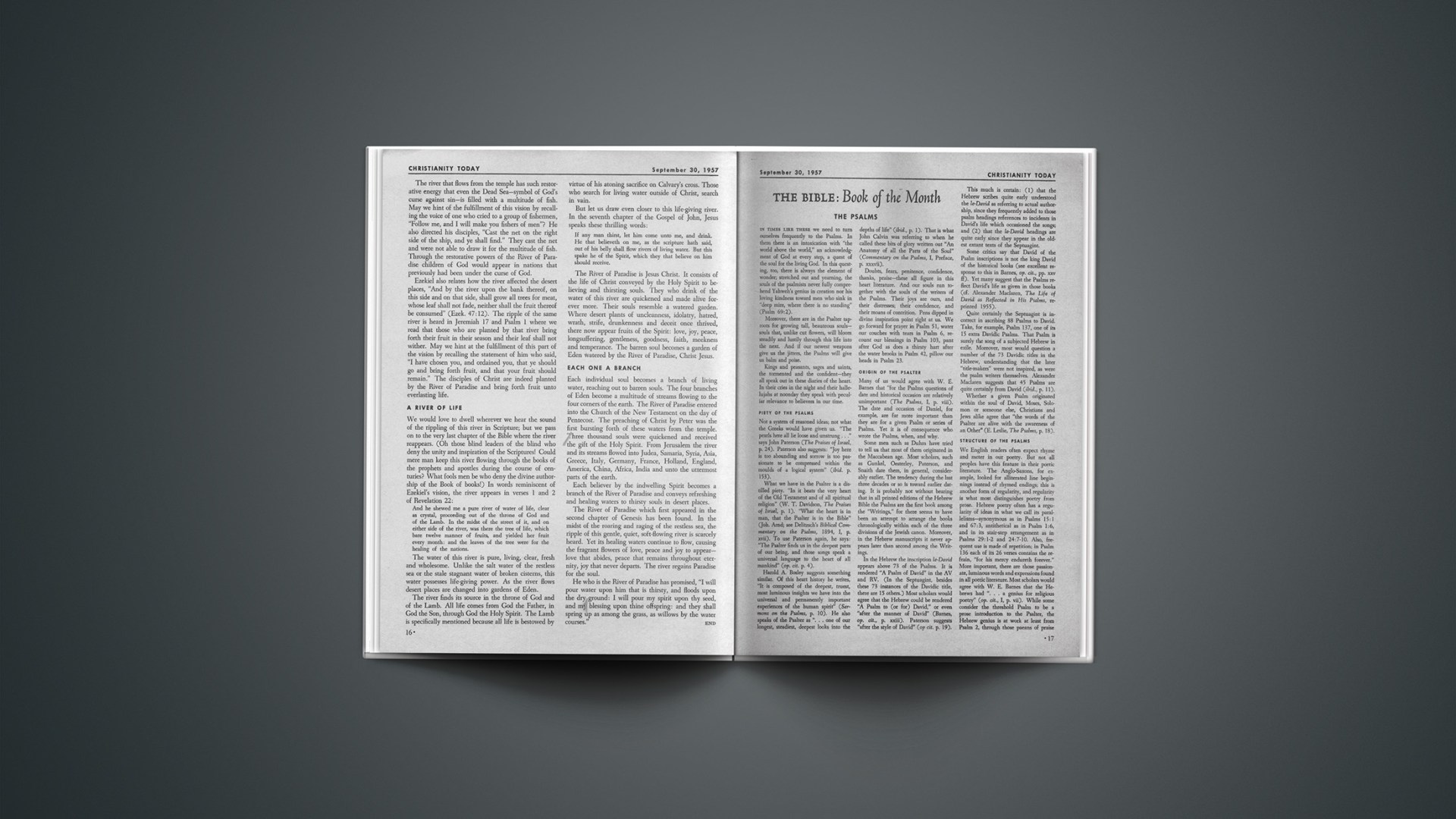It is generally accepted that the effective propagation of the Faith in the secular world depends ultimately on the witness of the layman. The idea of the apostolate of the laity is being eagerly examined by the Church in every country and in all denominations, and its far-reaching implications for the work of evangelism are beginning to be recognized even in those churches where the doctrine of the priesthood of all believers has not been central.
This concern for the apostolate of the laity has resulted in the emergence of a multitude of movements ranging from breakfast clubs for senators and congressmen in Washington, D. C., to the significant work of the Ecumenical Institute of Bossey, Switzerland. The Protestant Professional Associations in France, the Evangelical Academies in Germany, the Zoe-Aktines movement in Greece, the Church and World Institute in Holland—all of these movements have a common object, the development of effective lay witness in the secular world.
Difficulties In The Way
For the parish minister, engaged in the hard and often unrewarding tasks of congregational and parochial work, it is at once stimulating and disheartening to read of these movements. He accepts implicitly the idea of the lay apostolate: but all too often he finds it impossible to translate the idea into practice in his own parish. The difficulties in the way are enormous, and in most writings on the subject these difficulties are either by-passed or disregarded.
At the outset, he is faced with the simple problem of finding laymen in his own congregation who have any real grasp of their responsibility for witness in the secular world. The laity have been called “the unemployed of the Church,” and there are several factors contributing to their state of unemployment. But the most important one is the “clericalism” of the Church. Even in the Church of Scotland which, with its Presbyterian order, theoretically recognizes the place of the layman in the conduct of its affairs, the voice of the layman is seldom heard, and very little opportunity is afforded him to exercise any kind of “non-pastoral” ministry. And the layman has not only come to accept this kind of clericalism as part of the natural ordering of the Church’s life; he is also most reluctant to welcome a change. In his mind the minister’s duties have become clear-cut and well defined, and the ordinary layman is content to leave it at that.
There is another difficulty which the parish minister finds at the local level. He may have about him a small group of people who realize their responsibility as Christians for active service in the work of the Church and positive witness in their daily vocations, but who feel that they do not possess the equipment to undertake it. Particularly in Scotland, where we are traditionally reticent in speaking about our own personal faith, and where such personal confession is regarded as exhibitionism, does this difficulty make itself felt.
These things have been brought home to me in the last few years in visiting scores of churches in different parts of the country seeking to enlist volunteers for local missions of visitation. Time and again I have found myself speaking to people who had literally never thought of such work as a possible field of service. Visitation is the minister’s job, or, in certain circumstances, the elders’. And if, at the end of an evening of question and discussion and appeal, a handful of people might be prepared to admit that it was their responsibility, they hesitated at the thought of speaking to another person about the Faith.
In my own congregation these initial difficulties had been overcome. A group of lay people had emerged, representative of the whole congregation, and honestly committed to the work of evangelism within their own parish and to the business of “witnessing to their faith in their daily vocations.” But it was precisely at this point that the real issues of the lay apostolate made themselves felt, both within the church, and more particularly within the experience of the layman himself. It is hard enough to find laymen prepared to work out their salvation in terms of daily life. It is much harder to face the real implications of Christian witness, and offer the sincere layman guidance and direction and support in his attempt to take his religion out of the ghetto of the Church into the squalor and hostility of the market place. Perhaps the professional Christians, the ministers and theologians, would be less glib in their advocacy of the lay apostolate if they had more practical experience of trying to live the Christian life in a single room in a slum tenement, or as a riveter’s mate in a Clyde shipyard.
To Be Or To Act?
One of the most penetrating studies of the laymen’s part that has recently appeared is in Jacques Ellul’s book, The Presence of the Kingdom. M. Ellul is Professor of Law at Bordeaux University, and the manner of his own conversation to the Faith qualifies him to speak with authority on his theme—the communication of the gospel in a secular world, and the duties and demands which this world lays upon the Christian. He writes: “In reality, today the theologian has nothing to say to the world, because there are no laymen in our churches; because, on the one hand there is the minister, who does not know the situation in the world, and on the other hand, there are ‘laymen,’ who are very careful to keep their faith and their life in different compartments, or who try to escape from this dilemma by concentrating on ethics. Theological truth has no point of contact with the world … (and) God uses material means—in other words, he acts by his spirit through human instruments. Now it is this human instrument that our churches lack: that is why, when the gospel is preached, its message no longer reaches the world.”
M. Ellul goes on to examine the character of the situation which is to be addressed. He entertains no illusions about the modern world, regards it as “the domain of Satan,” and sees man dominated and controlled by facts—technics, the State, production. He then asks his question: What does it mean to be a Christian in this situation? And his answer to that question is of supreme importance for anyone who is concerned with the lay apostolate.
In a sentence he sums up his attitude: “For Christians … what actually matters, in practice, is ‘to be’ and not ‘to act.’ ” With tremendous insight he deals with the modern obsession for action, particularly as it manifests itself in the Church, and exposes its inadequacy. Christian living is the first responsibility; and this “being” takes the form of a threefold awareness: the true meaning of our neighbor, “the brother for whom Christ died”; of the event, “the intervention of one fact in the course of life, of history, of development … which includes within itself the meaning of all the development of the past, and significance for the future”; and of the frontier which exists between the profane and the sacred, the limit set to human pretensions by God. Given this awareness, a new style of life will emerge for the Christian, lived in tension between the secular world and theology, and creating a genuine point of contact for the communication of the gospel.
It is idle to speak of the lay apostolate to men and women who have no first-hand knowledge of the meaning of the Christian experience. So much of the Church’s well-intentioned effort to enlist its laymen goes for nothing because it is concerned with action and organization, and not with what Ellul calls “being.” In Scotland the most widespread attempts to work out the meaning of the lay apostolate have been undertaken at the level of Youth Fellowships, and in the past few years we have seen the development of a number of Christian “action groups” among young people. Theoretically these action groups are necessary and inevitable if the idea of the lay apostolate is to be taken seriously. But so often—at least in my own experience—they have broken down after a year or two mainly because the demands of Christian action were being superimposed on young people who neither understood nor accepted the presuppositions on which Christian conduct is based. A vague and inarticulate identification with Christianity is not a sure enough foundation for building a Christian life. Something more is needed before we have any right to launch the layman into the tension of bearing a Christian witness in a hostile world. The pre-condition of Christian action is that “being” of which Ellul has written, the conscious and personal appropriation of Christ which leads to a new “style of life,” and which in turn makes Christian action not only meaningful but possible.
Personal Involvement
In other words, before there is any hope of seeing the emergence of a genuine lay apostolate within our Church we have to begin at the true point of departure. Christianity is an intensely personal religion, and a man cannot be a Christian by proxy. We have arrived at the paradoxical situation of eagerly seeking a lay apostolate within our churches and finding it hard to produce anything but a tiny handful of laymen who see any point in the apostolate. It is easy enough to find well-meaning people in our churches who will provide tea or organize a concert for the lodging-houses. But if anyone is needed to give a ten-minute address or lead in prayer we have to go to the mission halls or the Christian Brethren.
Of course we can rationalize our failure in this regard by pointing to the subjectivism of evangelical religion, or by pointing to the dichotomy between its profession and its practice. But most of us know that we are rationalizing, and that the lay apostolate will never be anything but a pious hope unless we are prepared to recognize that Christian action which does not emerge out of a personal faith is a contradiction in terms.
Concern For The World
I have tried to point out that there is a fundamental truth in evangelical religion which it is necessary to preserve. Equally I am convinced that its inevitable “personalism” has to be guarded against. Too often the concern for individual salvation meant a complete indifference to the Church, and a retreat from the actual world in which men earn their bread. Henri Perrin, in his book, Priest-Workmen in Germany, tells how he met thirty young Seminarians, eager, enthusiastic, dreaming of conquering the world. But he writes of them: “Often, spiritually meant simply holding on to certain pious practices—‘my’ prayers, ‘my’ interior life—and led to a tendency to cut themselves off, to be always on the defensive against their environment, to remain in their shell. You would have thought that they had nothing to offer the world dying beside them—as if they were beaten and flattened out by the life seething round them.” The evangelical Christian so often lives in this kind of vacuum, and fails to recognize the relevance of the Faith for his daily life.
Explosive And Revolutionary
The whole idea of the apostolate of the laity is explosive and revolutionary, and confronts us with a threefold challenge.
First of all, it compels us to wrestle with the supremely difficult task of leading men and women to a point of decision in which the Faith becomes a personal possession. This is by no means to say that the only valid conversion is the sudden, emotional, “time-and-place” conversion associated with revival meetings, although that may be the path along which many of our best laymen will come. It is not important that a man can say that in such a place and at such a time he became a Christian. It is supremely important that any man who is expected to bear a Christian witness should know beyond any shadow of a peradventure where he stands now. He should be a man for whom penitence and faith are not merely theological terms, but an expression of his own experience of God. No distinctive Christian witness is possible without it.
The idea of the lay apostolate presents us with an inescapable challenge, in the second place, because if it is taken seriously it will mean upheaval and revolution within the conventional framework of the Church’s life. The group which emerges to seek a true Christian solidarity, to be an oasis within our parched Church, will find itself in inevitable conflict with those who are content with things as they are, and who set their face against any change in the ordered and traditional pattern. Such a group will not find an outlet for its energies, a sphere in which to express itself, in the routine of mothers’ meetings, men’s clubs and dramatic clubs which go to make up the weekday activities of any normal congregation. “Only a revolution within the churches,” writes Canon Collins, “a revolution of thought and outlook and of the whole setup can make them effective instruments in God’s hands for the evangelizing of this country: and only Christians who are revolutionary in thought and outlook and their way of life can hope to be effective evangelists today.” Wherever a cell or group for lay witness comes into being within a church it will involve tension and conflict. And that is the price we have to pay for taking the lay apostolate seriously.
New Methods Needed
The third challenge of the lay apostolate is perhaps the most difficult of all. When this group of people comes forward, drawn from different backgrounds and types, to explore the demands of Christian discipleship, it becomes immediately evident that new methods of instruction and training and new levels of Christian fellowship have to be explored if we are to keep faith with the layman. What happens, for example, when a business man with a family discovers that his business methods can no longer be squared with his new standards of judgment? What happens when a girl feels compelled to give up her job because she cannot obey the instructions of her employer and remain true to her faith? What are the determining factors for a man employed in a shipyard or a woman struggling to bring up a family in a one-room tenement house?
The lay apostolate may possess tremendous possibilities for the propagation of the Faith in a secular world. Let us also be assured that, if we allow it to become anything more than an idea in the mind of the professional theologians, it will lead us into unsuspected conflict. But for the Church, as for the individual, the point of conflict is the point of growth.
Tom Allan served the Church of Scotland as field organizer of the “Tell Scotland” Movement. Since September, 1955, he has been minister of St. George’s-Tron, Glasgow. He was executive chairman of the Billy Graham All-Scotland Crusade, and assisted with the Graham campaign in New York City. The material on “The Place of the Layman” is an abridgment of a chapter in his book The Face of My Parish, used by permission of Harper & Brothers, publishers of a new American edition.
Soul Searching
A soldier with no zest for fighting,
A poet with no zeal for writing,
An architect without a plan:
The prototype of modern man.
JOHN COOPER



